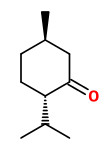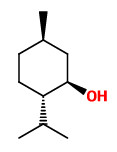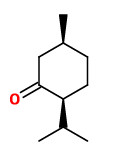Mentha canadensis L. - syn.Mentha arvensis DC. var. piperascens Malinv. - Lamiaceae
Japanese mint, American corn mint, Canadian mint, Japanische Minze
Perennial herb, native to North America and Asia, cultivated worldwide (as a source of natural menthol).
„The First nations used mint tea to remedy bad breath or toothache, or to cure hiccups.“ wikipedia
„A wide range of variations was recorded in the somaclones of Mentha arvensis L. var. piperascens Holmes for menthol (65.2-94.8%), menthone (1.4-20.9%), isomenthone (1.0-5.2%) and menthyl acetate (0.8-8.5%).“
[Genetic improvement of mints: On the qualitative traits of essential oil of in-vitro derived clones of Japanese mint (Mentha arvensis var. piperascens Holmes). Kukreja, A. K., Dhawan, O. P., Ahuja, P. S., Sharma, S., Mathur, A. K., Journal of Essential Oil Research, Vol.4(6), 1992, 623-629]
The essential oil of American cornt mint from a field experiment conducted in the semi-arid tropical climate of South India contained menthol (73.0%), menthone (9.6%), isomenthone (4.0%), and menthyl acetate (4.0%).
[Biomass and essential oil yields of cornmint (Mentha arvensis L. f. piperascens Malinvaud ex Holmes) planted in different months in semi-arid tropical climate. Rajeswara Rao, B. R., Industrial crops and products, Vol.10(2), 1999, 107-113]
„The chemical composition of essential oils isolated from six different cultivars of corn mint grown at CIMAP Field Station, Pantnagar, were compared: menthol (77.5-89.3%) was the main constituent of all the cultivars, followed by menthone (0.3-7.9%) and isomenthone (3.7-6.1%). The oil of MAS-1 cultivar contained the highest concentration of menthol (89.3%) but the lowest percentage of menthone (0.3%), while isomenthone was not detected. Although the compositions of the six oils were similar, quantitative differences in the concentration of some constituents was observed. Yield and quality appraisals in the study led to the identification of the cultivars Kosi, Himalaya and Damroo as the most potent genotypes for maintaining mint crop diversity and productivity stability.“
[Essential oil composition and chemoarrays of menthol mint (Mentha arvensis L. f. piperascens Malinvaud ex. Holmes) cultivars. Singh, A. K., Raina, V. K., Naqvi, A. A., Patra, N. K., Kumar, B., Ram, P., Khanuja, S. P. S., Flavour and fragrance journal, 20(3), 2005, 302-305]

Mentha canadensis, Okanagan-Similkameen, Canada (2025) © Abby Hyde CC BY-SA 4.0 inaturalist.org


